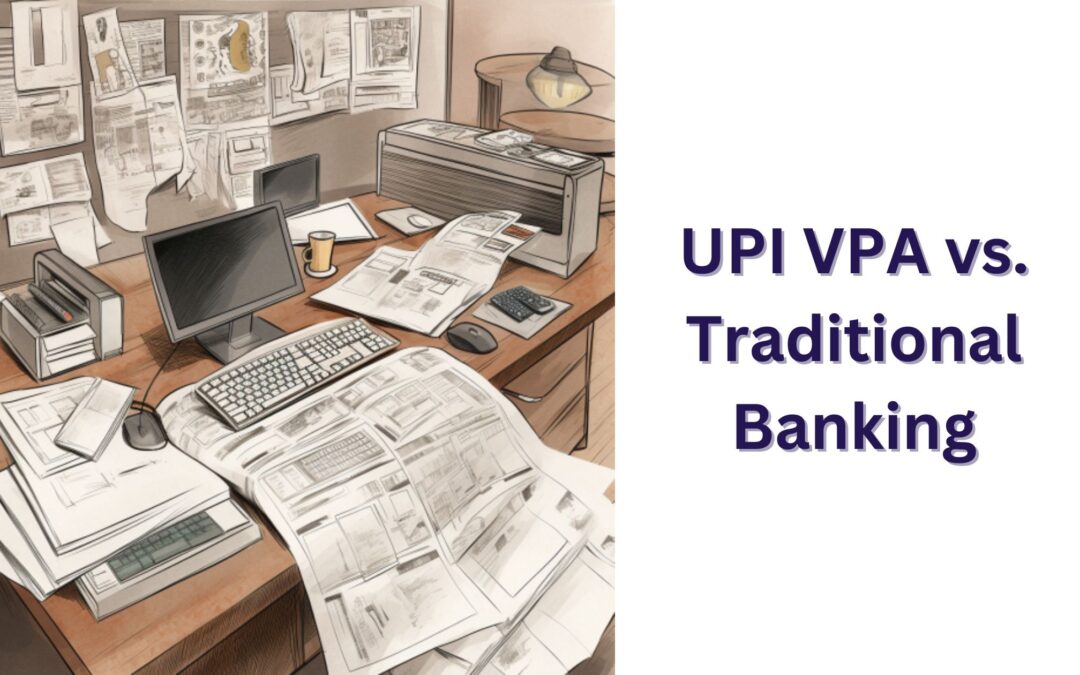In today’s fast-paced world, where convenience and efficiency are paramount, the way we handle our finances has evolved dramatically. UPI VPA is one significant development. This has changed the traditional banking landscape.
This article will delve into the world of UPI VPA and compare it to the traditional methods of banking, highlighting their differences, advantages, and disadvantages.
What is UPI VPA?
Unified Payments Interface Virtual Payment Address is a digital payment system that allows users to send and receive money using a unique virtual payment address. It eliminates the need for traditional bank account numbers and IFSC codes, simplifying transactions.
How does UPI VPA work?
It operates through a mobile application, allowing users to link their bank accounts and create a unique virtual payment address. This address initiates transactions, making it a secure and user-friendly option.
Advantages of UPI VPA
- Simplicity: It simplifies transactions by replacing lengthy bank details with a single virtual address.
- Instant Transfers: Funds are transferred instantly, reducing waiting times associated with traditional banking methods.
- 24/7 Availability: You can make transactions round the clock, making it highly convenient.
- Security: This feature uses robust encryption and authentication methods, ensuring secure transactions.
How to Use UPI VPA
- Creating it: To start, users need to link their bank account with a UPI-enabled app or platform and create a unique VPA. One can do this usually during the app setup process.
- Add Beneficiaries: Users can add other people’s VPAs or bank account details to their app as beneficiaries to make transactions easier in the future.
- Initiate Transactions: Users can send money by entering the recipient’s VPA or by scanning a QR code. They can also make payments by entering the recipient’s mobile number, Aadhar number, or bank account details if the respective app supports these options.
- Authentication: Most UPI transactions require two-factor authentication, such as an OTP (One-Time Password) or a PIN, to ensure the security of the transaction.
- Transaction Confirmation: After authentication, they have confirmed the transaction, and both the sender and recipient receive instant notifications.
Traditional Banking: The Old Guard
The Basics of Traditional Banking
Traditional banking concerns the use of physical bank branches, checks, and account numbers for financial transactions. It has been the basis of the financial industry for decades.
Drawbacks of Traditional Banking
- Time-Consuming: Traditional banking, with in-person visits and manual processes, can be time-consuming.
- Limited Hours: Bank branches usually operate during business hours, thus limiting accessibility.
- Transaction Costs: Some traditional banking services may incur higher transaction costs.
UPI VPA vs. Traditional Banking: The Face-off
Convenience
UPI VPA takes the lead in terms of convenience. With a mobile app and a virtual payment address, users can make transactions from anywhere at any time. In addition, traditional banking requires physical presence and sticking to banking hours.
Speed
Speed is another area where Unified Payments Interface Virtual Payment Address excels. Transactions happen in real-time, while traditional banking may involve delays due to paperwork and clearance processes.
Security
Both UPI VPA and traditional banking prioritize security, but UPI VPA’s advanced encryption and authentication methods provide an added layer of protection.
Costs
In terms of costs, UPI VPA often proves to be more cost-effective due to reduced overheads associated with physical bank branches in traditional banking.
Accessibility
The 24/7 availability and ease of use make it accessible to a broader audience, including those who may have limited access to traditional banking services.
Conclusion
In the ever-evolving financial landscape, Unified Payments Interface Virtual Payment Address stands as a modern, efficient, and user-friendly alternative to traditional banking. While traditional banking has its merits, the ease, speed, and cost-effectiveness of UPI VPA are transforming the way we handle our finances. Embracing the digital revolution in financial transactions is becoming increasingly essential.
FAQs
Is UPI VPA safe to use for online transactions?
Yes, it is considered safe due to its robust security features and encryption.
Can I use UPI VPA for international transactions?
It is primarily designed for domestic transactions within India and may not be suitable for international payments.
Are there any fees associated with UPI VPA transactions?
The transactions are typically free, but some banks may charge nominal fees for specific services.
Can I use UPI VPA without a smartphone?
The transactions are primarily app-based, so a smartphone is usually required.
What happens if I forget my UPI VPA?
You can reset it through your bank’s mobile app or customer support.

